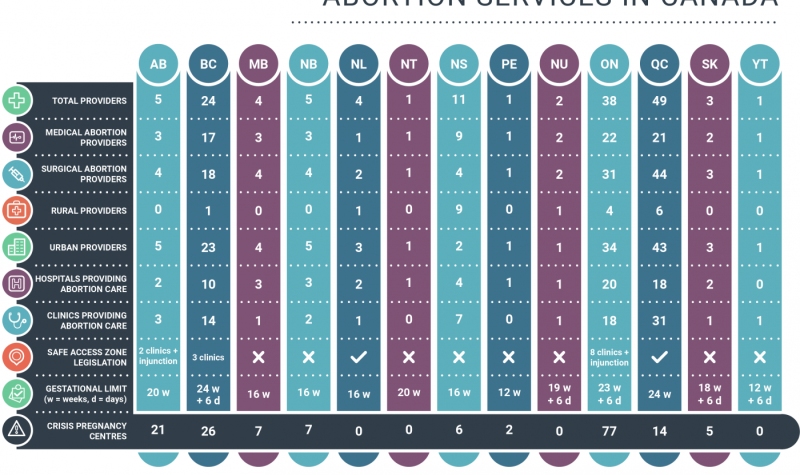The decision to end a pregnancy can be both difficult and complex, and there are many reasons you may choose to have an abortion.
The health of women and people with the ability to give birth is at risk in the United States, but even in Canada, the right to have an abortion has only been in effect since 1988 when the Supreme Court of Canada decriminalized abortion, citing the law as unconstitutional.
According to the Society of Obstetricians and Gynaecologists (SOGC), “Abortion is the second most common reproductive health procedure, experienced by 31% of Canadian women, and according to an interview I conducted with a local physician who offers the procedure of abortion, it’s the most common procedure for women.
Prior to that, in 1967, the Royal Commission on the Status of Women was convened by the federal government, and after three years of public hearings, the commission issued a groundbreaking report on women’s affairs. It stated that abortion would be legal for the first 12 weeks of a pregnancy and could still be legal after 12 weeks if the pregnancy threatened the health of the pregnant person.
In the 1980s, Henry Morgentaler — a Polish Canadian physician and abortion advocate — was prosecuted again for providing abortions. In 1988, his case R. v Morgentaler went to the Supreme Court. It evaluated his actions this time in relation to the 1982 Charter of Rights and Freedoms. The court found that the Criminal Code provision on abortion violated a woman’s right to “life, liberty and security of the person” guaranteed under Section 7 of the Charter. Chief Justice Brian Dickson wrote: “Forcing a woman, by threat of criminal sanction to carry a foetus [sic] to term unless she meets certain criteria unrelated to her own priorities and aspirations, is a profound interference with a woman’s body and thus a violation of her security of the person.”
Specifically, the court did not say there was an inherent right to abortion under the Charter. Rather, it said the system regulating access to abortions — particularly the hospital review committees that were meant to approve abortion requests — had so many barriers and operated so poorly that it was “manifestly unfair.” As a result, the abortion law was struck down. (It was repealed entirely in 2019.) Because no other law has replaced it, abortion has remained legal throughout Canada since 1988.
But despite its legalization, abortion remains of the most divisive political issues of our time.
In July 2015, after a lengthy review process, the federal government allowed Canadian doctors to begin prescribing Mifegymiso a drug regime more commonly known as the “abortion pill.” The two drugs that make up Mifegymiso allow women to end an early pregnancy (within 70 days of becoming pregnant) at home. Designed in part to improve access to abortion, the drugs act by inducing a miscarriage.
Unlike with other medical drugs, the federal government requires doctors to dispense Mifegymiso directly to patients; rather than sending them with a prescription to a pharmacy.
In November 2017, Health Canada changed the language in their product monograph from “physicians only” to “health professional.” This change extends prescribing and dispensing to pharmacists, nurse practitioners, midwifery groups, etc.. The addition of midwife and nurse prescribers is especially important because it has the potential to significantly increase access to medical abortion. There are Almost 1,700 midwives and almost 6,000 Nurse Practitioners working in Canada. But increasing access to medical abortion requires these health care providers on the frontline (family physicians, nurse, and midwives) to offer medical abortion as an option to their patients.
Doctors are also required to take an online training course before they can dispense it. Women’s health advocates have criticized these rules; they say they unnecessarily complicate access to the drugs, and make it difficult for doctors with small practices, especially in rural areas, to stock supplies of it.
Today, abortion falls under provincial health-care systems as a medical procedure, meaning that access to the procedure varies considerably from place to place.
To listen to this brief history (and more specific context to northern BC) click on the link below.


